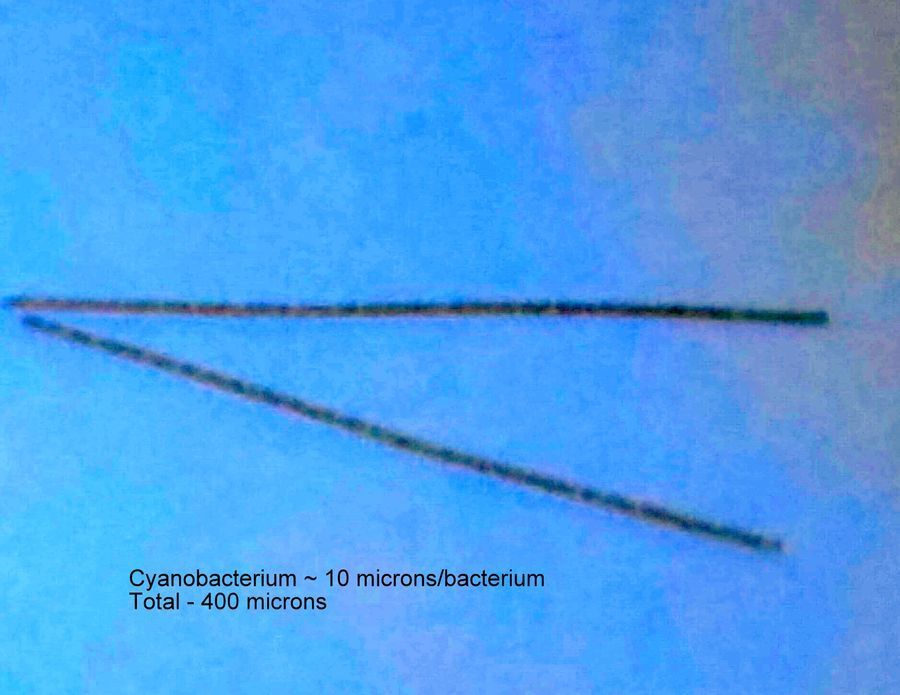Life in a liter of Pond water — Euplotes– Day 1
 Oct 14, 2015 • 2:27 PM UTC
Oct 14, 2015 • 2:27 PM UTC Unknown Location
Unknown Location 140x Magnification
140x Magnification Microorganisms
Microorganisms
laksiyer
Human observer of life. https://sukshmadarshin.wordpress.com
97posts
1255comments
5locations

In the little town I grew up in India, one of my favorite pastimes was pond watching. A little depression near our school would fill up during the monsoons, and life would spring out as though spontaneously. We (friends and I) would count whatever we could see and marvel at the great struggle (or dance, depending on your view) of life. The ecosystems would change from time to time and then there would be a whole new community of inhabitants, providing endless entertainment. Many decades later, when I had access to a compound microscope, I realized I could “bring the pond home” and enjoy the dance of life under a lens. Now with a foldscope and with winter rearing its ugly head early in the year in the North earth of US, and the floral landscape all but gone, I am planning on bringing the pond home with am aim to identify as many life forms as possible (Another table perhaps).
Near my residence there is this aptly named Inspiration lake besides which there is an un-named pond. A nice green sheen of duckweed had grown on it recently and since I hadn’t foldscoped the duckweed, I took a liter or so of the pond water with a few duckweed in an old spice bottle and have kept the open bottle out in the balcony. My goal is to identify as many species as I possibly can, and with a lot of help from friends and foldscopers, for as long as I can. I will try to keep it systematic and where possible record physical parameters.
Near my residence there is this aptly named Inspiration lake besides which there is an un-named pond. A nice green sheen of duckweed had grown on it recently and since I hadn’t foldscoped the duckweed, I took a liter or so of the pond water with a few duckweed in an old spice bottle and have kept the open bottle out in the balcony. My goal is to identify as many species as I possibly can, and with a lot of help from friends and foldscopers, for as long as I can. I will try to keep it systematic and where possible record physical parameters.

For all these observation, I am using a cavity slide. I take a drop of water, put it on a coverslip, add vaseline to the sides, invert the cavity slide over the coverslip such that the drop is in the cavity and invert again (Will put up pics soon). Sometimes the drop hangs (and hence this is called the hanging drop), at other times, it fills up the cavity, which is fine too. This way the foldscope doesnt get wet in my hands. You can make your own cavity slide too, and I think I have seen @Manu and @Matt do that.
Day 1 began with a bang with a plant, a ciliate, a flagellate, an animal and a bacterium. The pH of the water sample was ~6
1, Plant: Lemna (duckweed). Taxonomy: Plantae->…Monocot ->Araceae -> Lemnoideae. This is actually a flowering plant related to the jack in the pulpit and makes a tiny flower, although this far I haven’t seen the flower under the foldscope. It also reproduces asexually by budding and I caught one such in the middle of the process. I am hoping the lemmas flower someday.
Day 1 began with a bang with a plant, a ciliate, a flagellate, an animal and a bacterium. The pH of the water sample was ~6
1, Plant: Lemna (duckweed). Taxonomy: Plantae->…Monocot ->Araceae -> Lemnoideae. This is actually a flowering plant related to the jack in the pulpit and makes a tiny flower, although this far I haven’t seen the flower under the foldscope. It also reproduces asexually by budding and I caught one such in the middle of the process. I am hoping the lemmas flower someday.
2. The Ciliate: Euplotes. Taxonomy. Alveolate->Ciliophora->Spirotrichae The star of the day, what a character. Whenever I see a ciliate like Euplotes it reminds me of the morphological and functional landscape that a single cell can explore. When on a solid surface, euplotes literally walks with its cilia. These cilia are actually fused to form conical structures called cirri. At other times they swim very efficiently. You can see ciliary motion in its prominent oral apparatus and at times you can see the waves of water current. As compared to this one-man-show, are the multicellular life forms with different cells for different functions. In the video below, you will see a single-celled euplotes (~100 microns) next to a multicellular rotifer (~200-250 microns) to get an idea of scale. I have observed single cell ciliates consume multicellular rotifers! Also note the euplotes with intracellular particles (a full meal?) and an occasional contractile vacuole. Excerpts follow:
3. Rotifer. Metazoa->Protostomes–> Lophotrochozoans—> Currently phylogenetics places them in the Lophotrochozoans along withe annelids and molluscs , but phylogenetics is a data-dependent field and these relationships might change with more data. Also known as the wheeled-animalcule. Busily grazing on the duckweed frond. About 200-250 microns in size. You can see that the foot is used to anchor to substrates by the toe. A clear eye spot is visible as also the stomach and corona.
4. Flagellate. Dont know this genus, but it has a tumbling way about it.
5. Bacterium. Perhaps Nostoc (Bacteria->Cyanobacteria). A cyanobacterium that divides by breaking off. I counted ~40 bacteria in one chain and each is about 10 microns long– Pretty large for a bacterium.

More to come in the future.
Sign in to commentNobody has commented yet... Share your thoughts with the author and start the discussion!

 0 Applause
0 Applause 0 Comments
0 Comments_300x300.jpeg)

















